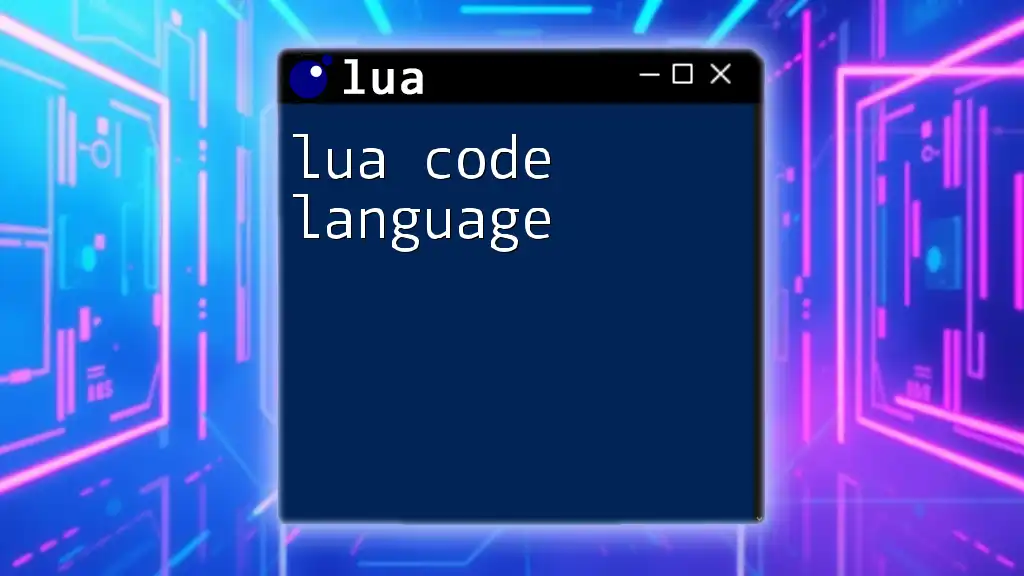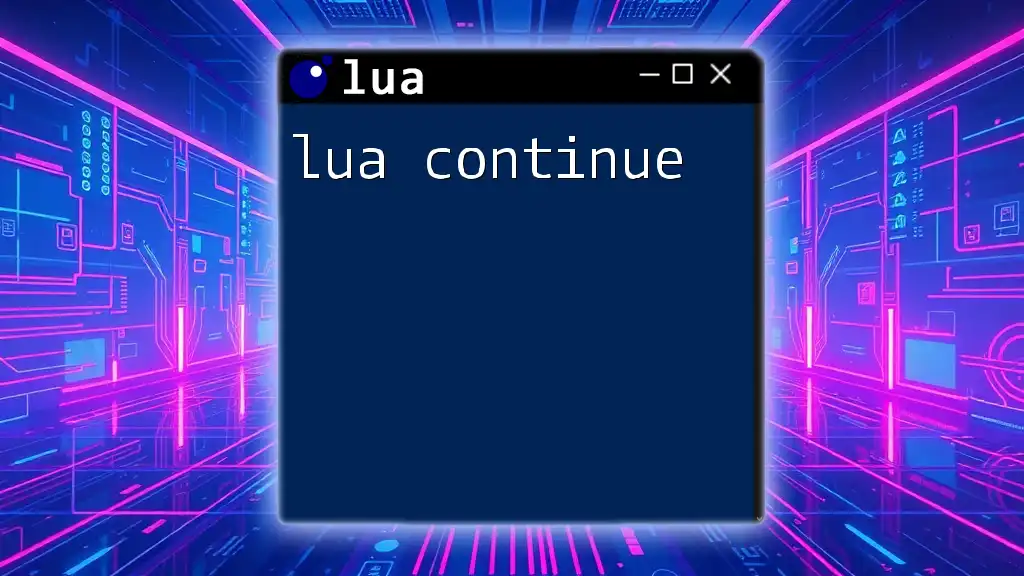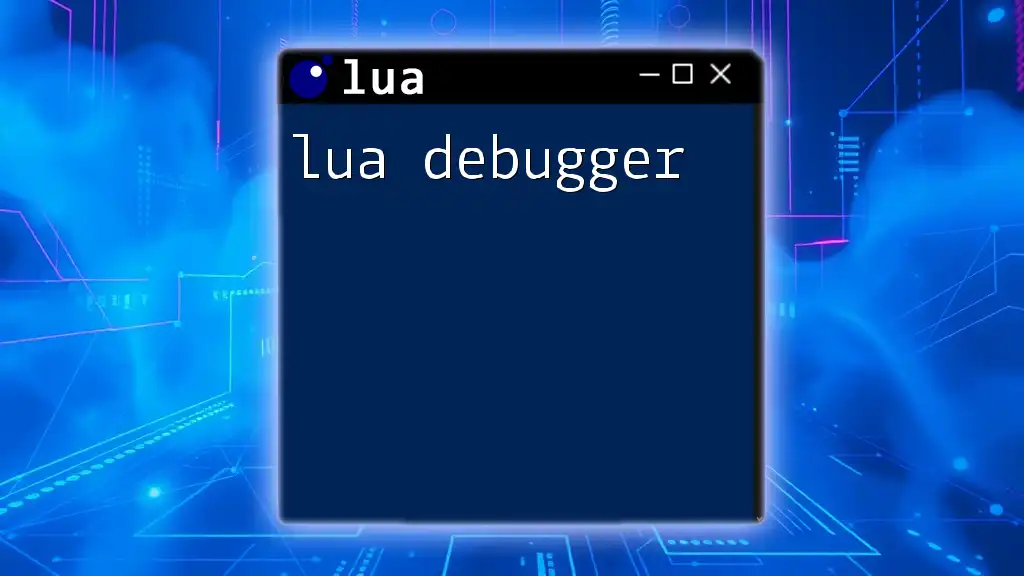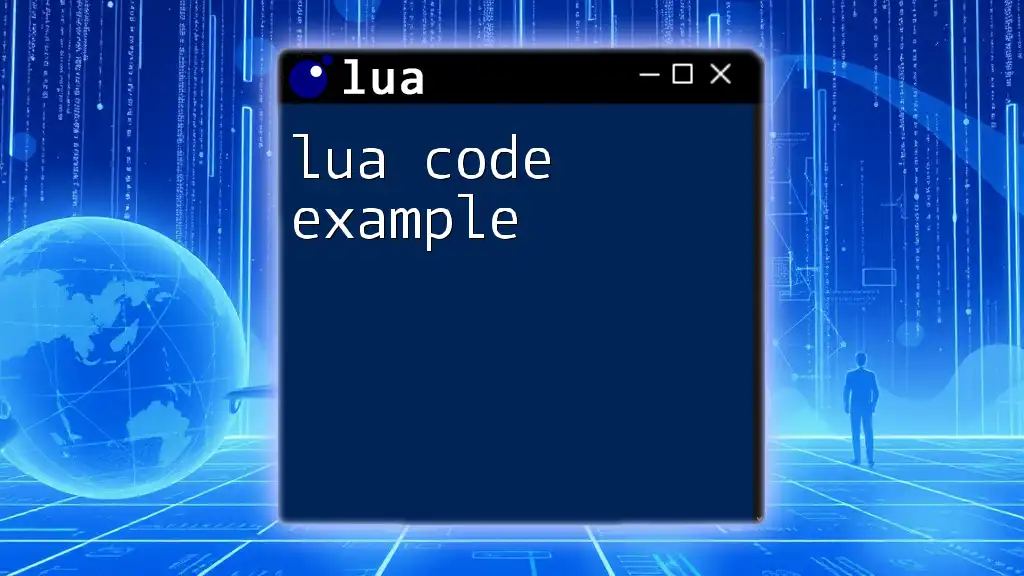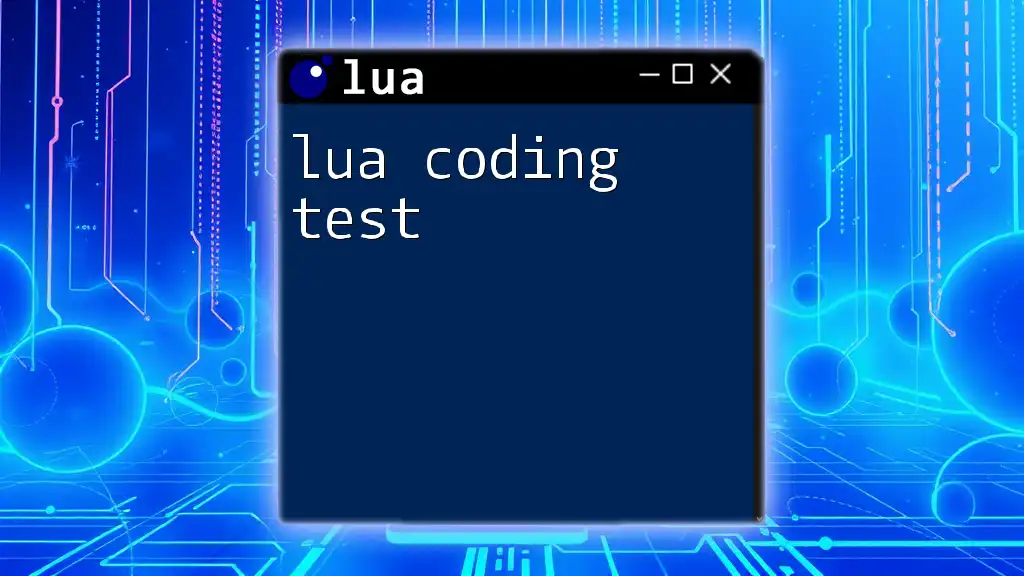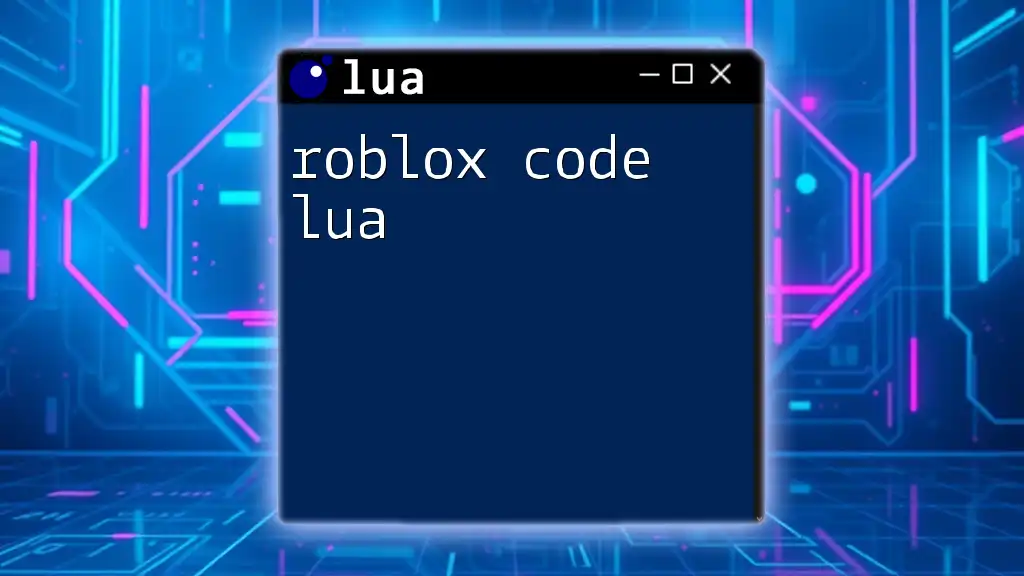Lua is a powerful, lightweight scripting language ideal for embedded systems and game development, known for its simple syntax and flexibility. Here's a basic example of a Lua script that prints "Hello, World!":
print("Hello, World!")
Introduction to Lua
What is Lua?
Lua, a powerful yet lightweight scripting language, was designed in Brazil in the early 1990s. It serves as a versatile programming language with a focus on embedding capabilities, making it an ideal choice for applications, game development, and more. The core philosophy of Lua emphasizes simplicity and efficiency, which is why it has become popular in various fields, particularly in gaming environments and embedded systems.
Why Learn Lua?
Learning Lua offers several advantages. It's widely used in game development, with popular engines like Corona SDK and Unity incorporating Lua for scripting. Additionally, Lua is commonly utilized in embedded systems, making it valuable for those interested in the Internet of Things (IoT). When compared to languages like Python or JavaScript, Lua provides a minimalistic approach with fewer concepts to grasp, allowing for a quicker learning curve.
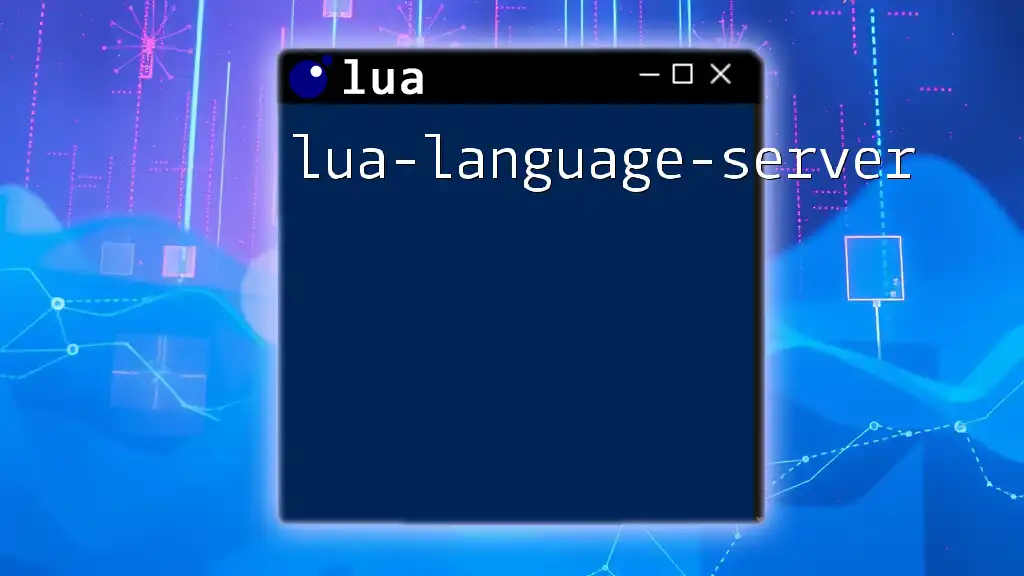
Setting Up Lua Environment
Installing Lua
To start coding in Lua, you need to set up your environment. Below are steps to install Lua across different operating systems.
- Windows: Download the Lua installer from the official website and follow the setup instructions.
- macOS: Use Homebrew by running the command:
brew install lua - Linux: Depending on the distribution, you can typically install Lua using the package manager. For example, on Ubuntu:
sudo apt-get install lua5.4
Executing Lua Code
Lua allows you to run code in two primary ways: interactive mode and using .lua script files. In interactive mode, you can type commands directly into a terminal, while script files allow for more complex programs.
Example: Running a simple Lua script: Create a file named `hello.lua` with the contents:
print("Hello, World!")
Then, execute it in the terminal using:
lua hello.lua
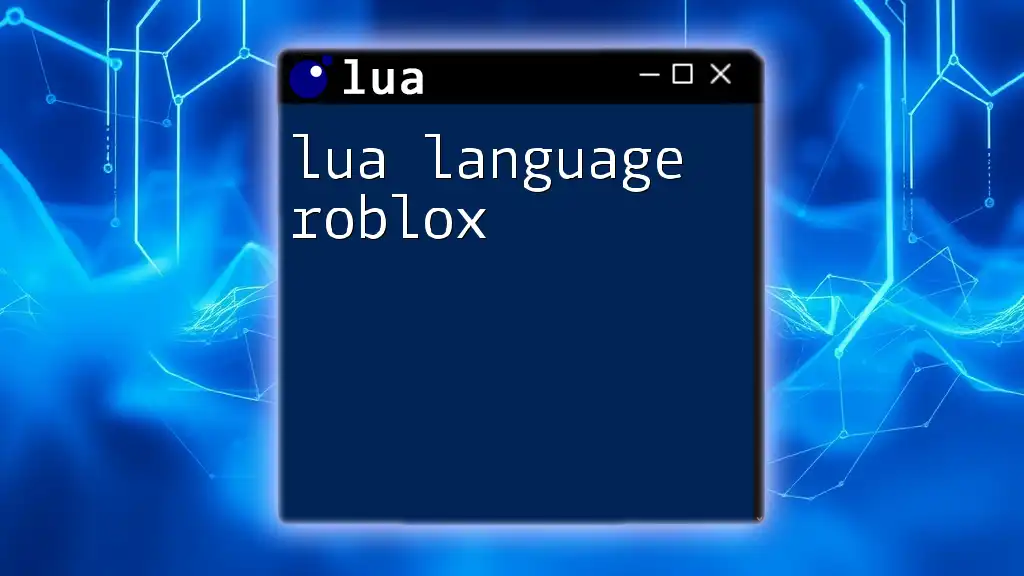
Basic Syntax
Variables and Data Types
In Lua, variables are dynamic and don't require explicit declaration. This leads to flexible coding practices.
The primary data types in Lua include:
- Strings: Used for text.
- Numbers: Represent numerical values.
- Tables: The most versatile data structure in Lua, functioning as arrays and dictionaries.
- Booleans: Represent true and false values.
- Functions: First-class citizens that can be stored in variables.
Code Example:
local name = "Lua"
local version = 5.4
local is_active = true
Operators in Lua
Operators in Lua include arithmetic (addition, subtraction, etc.), relational (equal to, greater than), and logical operators (and, or, not).
Code Example:
local sum = 5 + 10
local is_equal = (sum == 15)
This example shows how to perform arithmetic and check conditions.
Control Structures
Control structures allow for decision-making and loops in Lua, including the following:
- Conditional Statements: Use `if`, `elseif`, and `else` to perform different actions based on conditions.
- Loops: Including `while` and `for` loops for repeated actions.
Code Example:
if sum > 10 then
print("Sum is greater than 10")
end
for i = 1, 5 do
print(i)
end
This conditional structure checks a value and iterates through a set of numbers.
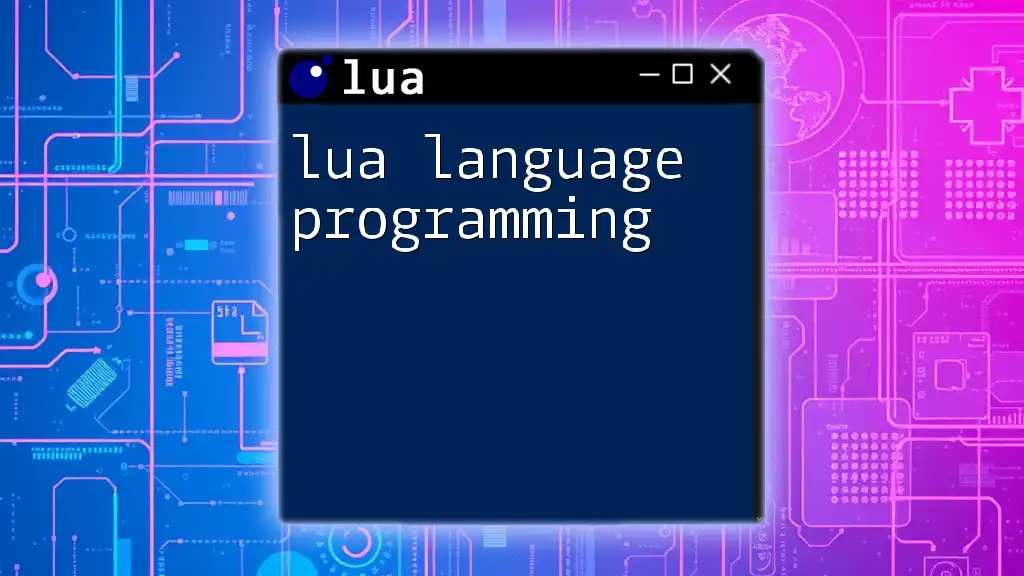
Advanced Lua Features
Functions
Functions in Lua are incredibly flexible, allowing for powerful structuring of your code. You can define functions, provide parameters, and return results.
Code Example:
function add(a, b)
return a + b
end
print(add(5, 10)) -- Output: 15
This demonstrates how to define a function that takes two arguments and returns their sum.
Tables: The Powerful Data Structure
Tables in Lua are the key to everything. They can be used as arrays, dictionaries, and more. Their effectiveness lies in their dynamic nature.
Code Example:
local fruits = {"apple", "banana", "cherry"}
print(fruits[2]) -- Output: banana
local person = {name = "John", age = 30}
print(person.name) -- Output: John
Here, the first example shows how to use a table as an array, while the second demonstrates its dictionary capability.
Metatables and Metamethods
Metatables enhance Lua's tables with advanced behaviors. They allow you to alter how tables function during certain operations.
Code Example:
local customTable = {}
setmetatable(customTable, {
__index = function(table, key)
return "Default Value"
end
})
print(customTable.nonexistentKey) -- Output: Default Value
In this case, custom behavior is established when accessing non-existent keys.
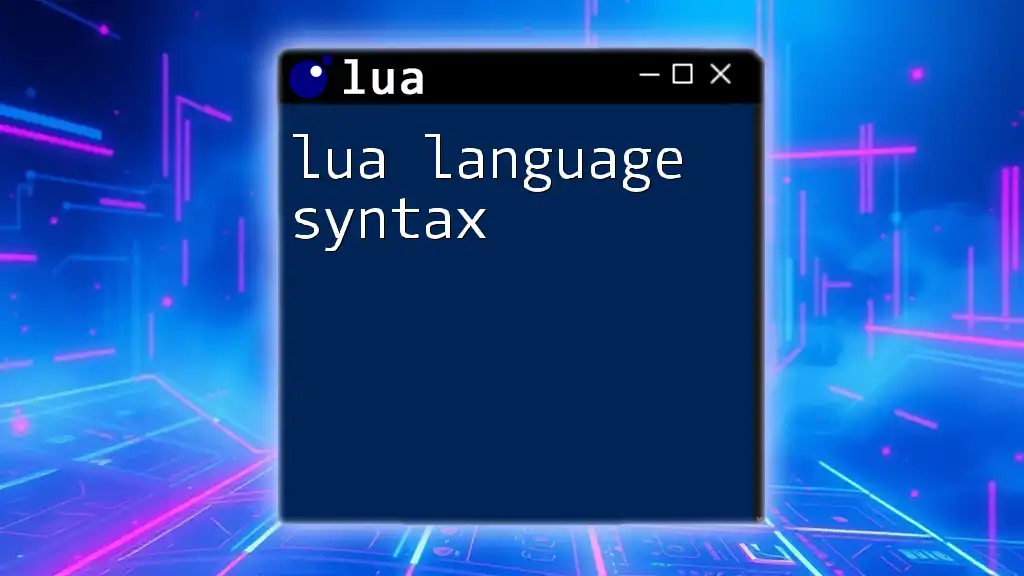
Lua and Object-Oriented Programming
Creating Classes in Lua
Though Lua does not have a built-in class system, it allows for object-oriented programming through metatables and tables.
Code Example:
local Dog = {}
Dog.__index = Dog
function Dog:new(name)
local instance = setmetatable({}, Dog)
instance.name = name
return instance
end
function Dog:bark()
print(self.name .. " says Woof!")
end
local myDog = Dog:new("Rover")
myDog:bark() -- Output: Rover says Woof!
This example creates a simple `Dog` class, showcasing how to instantiate objects and define methods.
Inheritance in Lua
Inheritance can be implemented in Lua using metatables, allowing you to build on existing structures.
Code Example:
local Animal = {}
Animal.__index = Animal
function Animal:new(name)
local instance = setmetatable({}, Animal)
instance.name = name
return instance
end
local Dog = setmetatable({}, {__index = Animal})
function Dog:bark()
print(self.name .. " says Woof!")
end
local myDog = Dog:new("Buddy")
myDog:bark() -- Output: Buddy says Woof!
In this code, a `Dog` inherits properties from `Animal`, demonstrating a basic inheritance mechanism.

Practical Applications of Lua
Using Lua in Game Development
Lua has become a staple in the gaming industry, especially in engine scripting. Its lightweight nature allows developers to script complex gameplay mechanics without overloading the game's performance. Engines like Corona SDK and Unity effectively leverage Lua for these tasks.
Embedded Systems and Lua
In embedded systems, Lua serves as an efficient language for small devices owing to its minimal memory footprint. Companies utilize Lua in IoT applications for sensor data processing.
Web Development with Lua
Lua is also suitable for web development, with several frameworks available, such as Lapis and Sailor. These frameworks allow developers to build robust web applications with ease.
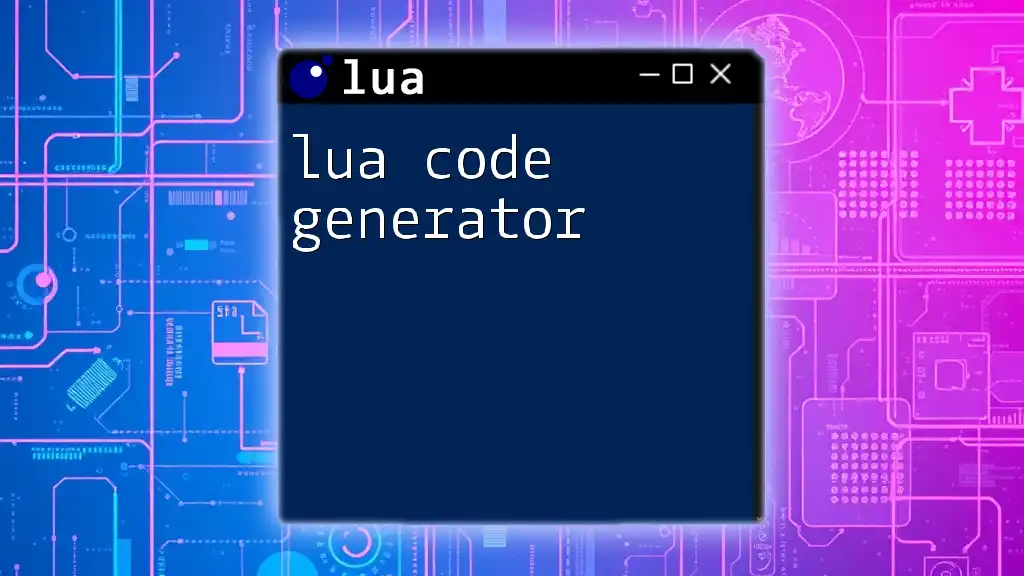
Resources for Further Learning
Books and Online Courses
Several resources can help deepen your knowledge of Lua. Books like Programming in Lua provide comprehensive insights. Online platforms, including Coursera and Udemy, offer structured courses for all experience levels.
Community and Forums
Connecting with the Lua community can be incredibly beneficial. Websites like Stack Overflow and the Lua official mailing list are excellent resources for resolving queries and sharing knowledge.
Useful Libraries and Frameworks
Explore popular libraries like LuaSocket for networking or LuaRocks for package management. These tools expand Lua's capabilities, making it even more versatile.
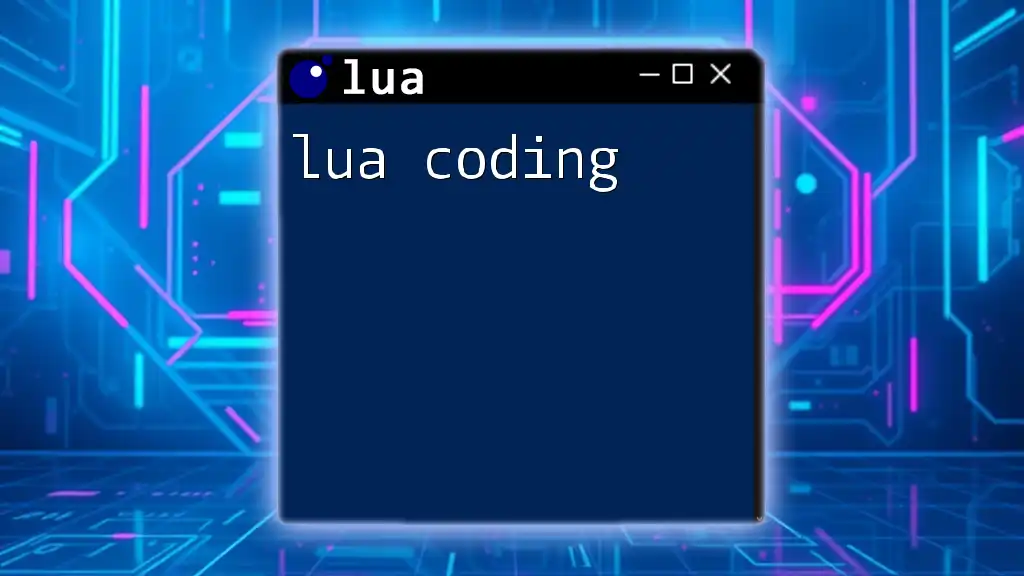
Conclusion
In summary, understanding the lua code language opens up a world of opportunities in various domains, from game development to web applications and IoT. With its simplicity, ease of learning, and flexibility, Lua stands out as a valuable language for both budding and experienced programmers. Practice regularly, engage with the community, and experiment with different Lua projects for the best learning experience.

